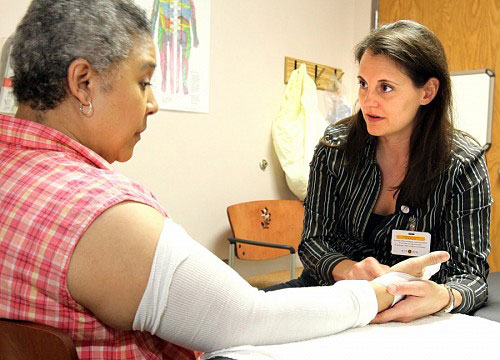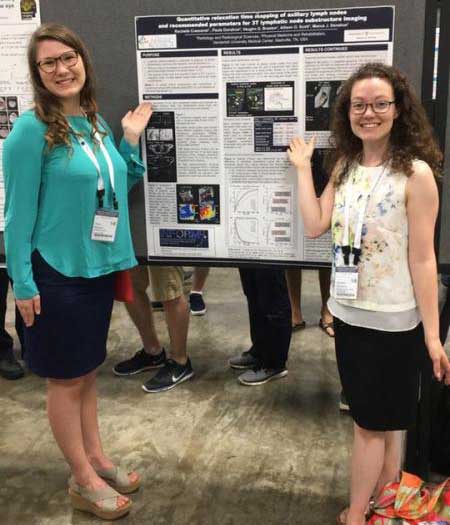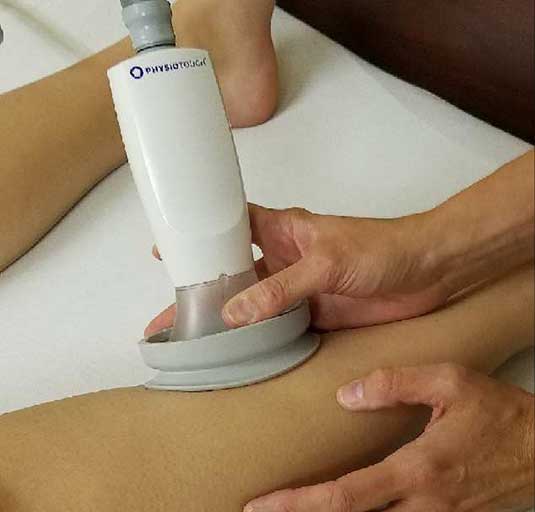INFORM Study
This area of our lab aims to apply novel, noninvasive structural and functional magnetic resonance imaging (MRI) methods in patients with mild and moderate breast cancer-related lymphedema (BCRL) to test fundamental hypotheses about relationships between lymphatic compromise and imaging biomarkers that may portend disease progression and individualized therapy response.
BCRL is a chronic, debilitating disease caused by lymphatic flow obstruction in the legs, arms, and shoulder regions. BCRL secondary to mastectomy and radiation therapy is a growing health concern and has been reported to occur, on average, in 21.4% of women within three years after breast cancer treatment and in as many as 94% of women five years after treatment. While there is no cure for BCRL, it has been shown that behavioral adjustments and aggressive therapeutic management of patients in early or subclinical disease stages can prevent or reduce long-term impairment. However, very limited information is available for identifying patients at highest risk for BCRL. Several specialized imaging methods have demonstrated that reduced lymphatic flow velocity and related lymphatic contractility impairment may portend BCRL risk, however these approaches require radioactive tracers and/or exogenous contrast agents, are generally only available in specialized centers, and are not performed in routine patient management.
We have very recently demonstrated that arterial spin labeling (ASL), a popular and noninvasive MRI method for measuring blood flow, can be adapted to measure flow of lymphatic fluid to axillary lymph nodes, and furthermore that lymphatic velocities reported using this technique are consistent with similar measures using exogenous contrast agents. Additionally, we have shown that chemical exchange saturation transfer (CEST) MRI can be used to characterize interstitial protein accumulation in patients in preclinical BCRL stages prior to limb volume changes. Importantly, both spin labeling and CEST utilize standard MRI equipment available at most hospitals and therefore can easily be disseminated to clinical or research centers seeking to expand their abilities to characterize lymphatic compromise.
In this work, we assess the ranges of lymphatic flow velocities and interstitial protein accumulation in healthy individuals and BCRL patients in preclinical, mild, and moderate stages of impairment, and finally to what extent lymphatic flow velocity and interstitial protein accumulation may predict BCRL progression. The long-term goal of this work is to demonstrate measurable, structural and functional observables, derived from noninvasive MRI approaches available at most hospitals, that can serve as trial end points for future randomized clinical trials of BCRL management therapies.

Preparation for Appointments
Please note the following:
- No metal or plastic clips, zippers, earrings, watches can be worn in the MRI (wedding bands/rings are okay to wear). We have scrubs to change into if needed, but if you’d like to wear clothes that do not have any clips, snaps, zippers, then you can choose to wear your clothes into the scanner instead of changing into scrubs. Any bra or cami that does not have adjustable bra straps, underwire or clips to fasten garment is okay to wear, i.e. sports bra style or a sleeveless shirt or cami without adjustable bra straps.
- If able, please wear a cami without adjustable bra straps or sleeveless shirt under your clothes as we will take arm measurements up to the underarms after your MRI scan.
- Please try not to drink any caffeine 3-hours before your appointment and any alcohol 12 hours before your appointment.


